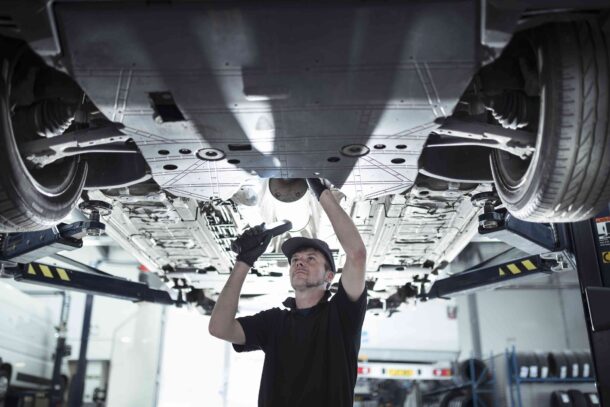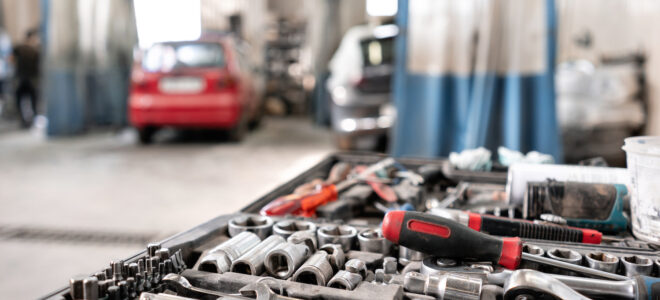Car repair manuals are a godsend for automotive enthusiasts and professionals alike. These comprehensive guides contain detailed information on how a vehicle is assembled, how each part functions, and how to repair or replace them.
Depending on your level of mechanical skill, you can tackle a range of tasks with the help of these manuals.
In this article, we will categorise various repair jobs based on the level of self-taught mechanical skill required.
Novice Level: Just Getting Started

If you’re new to the world of car repair, here’s where you can start:
- Visual Inspections: Before diving into hands-on tasks, familiarise yourself with the vehicle’s components. Look for obvious signs of wear, leaks, or damage.
- Oil Changes: One of the most basic maintenance tasks, changing the engine oil is a great introduction to car mechanics.
- Air Filter Replacement: A clogged air filter can reduce engine performance. Luckily, replacing it is straightforward and requires minimal tools.
- Tyre Rotation: This helps ensure even tyre wear, extending the life of your tyres.
- Battery Maintenance: Learn to check the battery terminals for corrosion and clean them.
Intermediate Level: Gaining Confidence
With some experience under your belt, you can attempt:
- Brake Pad Replacement: Brakes are crucial for safety. Learn to replace the brake pads and inspect the brake rotors.
- Coolant Flush: Over time, the engine coolant can become contaminated. Flushing the system and replacing the coolant can improve engine performance.
- Spark Plug Replacement: Worn-out spark plugs can reduce fuel efficiency. This task requires a bit more finesse but is manageable with guidance.
- Belt and Hose Checks: Inspect, and if necessary, replace worn belts and hoses to prevent unexpected breakdowns.
Advanced Level: For the Seasoned DIYer

For those who have mastered the basics:
- Transmission Fluid Change: This can be messy but is essential for maintaining a smooth-running vehicle.
- Suspension Work: This includes tasks like replacing shock absorbers or struts.
- Electrical Troubleshooting: Dive into the car’s electrical system, from fuses to wiring, to solve various issues.
- Engine Tune-ups: This involves a series of tasks to optimise engine performance.
Expert Level: Almost Professional
For those who live and breathe cars:
- Engine Overhaul: Dismantle the engine, replace worn parts, and reassemble.
- Transmission Repair: Dive deep into the workings of manual and automatic transmissions.
- Bodywork: Fix dents, replace panels, or even attempt paint jobs.
- Custom Modifications: From performance enhancements to aesthetic changes, the sky’s the limit.
Commercial Repair Manuals vs. Manufacturer’s Manuals: What’s the Difference?

mechanic in overalls repairing car in auto repair shop
When diving into car repairs, you might come across two primary types of manuals: Commercial Repair Manuals and Manufacturer’s Manuals. Here’s how they differ:
- Commercial Repair Manuals:
- Source: These are produced by third-party companies, not directly associated with car manufacturers. Popular brands include Haynes and Chilton.
- Content: They often cover a range of models and years, consolidating the information into one manual. This can make them broader in scope but sometimes less specific to a particular model.
- User-Friendly: These manuals are generally written with the DIYer in mind, focusing on clarity and ease of understanding, often supplemented with step-by-step photographs and illustrations.
- Availability: They are readily available in automotive parts shops, bookstores, and online platforms.
- Manufacturer’s Manuals:
- Source: Directly produced by the car’s manufacturer.
- Content: They are model-specific and provide detailed insights, sometimes including intricate details that might be omitted in commercial manuals.
- Technical Depth: These manuals tend to be more technical, catering more to professionals or those with advanced knowledge. They might include detailed schematics, parts numbers, and specific procedures.
- Availability: They might not be as easily accessible to the general public. However, many manufacturers now provide digital versions online, or they can be procured through dealerships.
Your choice between commercial and manufacturer’s manuals will depend on your needs. If you’re a novice or intermediate DIYer looking for general guidance, a commercial manual might be more suitable due to its user-friendly approach.
The Journey of a Thousand Miles Begins with One Step

This old adage resonates deeply with the world of car repair. Every vehicle owner starts their automotive journey with little to no knowledge, but with each repair, a new chapter of learning unfolds. Just as a marathon begins with a single stride, the mastery of automotive mechanics begins with understanding the basics.
Car repair goes beyond mere functionality; it’s an immersive experience that offers a unique blend of technical know-how and hands-on expertise. To many, the internal workings of a car can seem like an enigma. However, with a comprehensive car repair manual, this seemingly impenetrable world is translated into a language that even novices can understand. These manuals serve as a beacon, guiding users through the maze of wires, bolts, and gears, illuminating the path towards automotive proficiency.
As we steer into the future, the automotive industry stands on the brink of revolutionary change. The surge in electric and hybrid vehicles heralds a new era, redefining our understanding of transportation. These advancements challenge the status quo, bringing forth innovative systems and mechanisms previously unseen. Consequently, the traditional repair manual is also undergoing a transformation. Updated editions are continuously being released, encompassing the latest technological breakthroughs, ensuring that car enthusiasts remain abreast of the evolving trends.
But why do individuals invest time and effort into understanding car repair? For some, it’s the allure of self-sufficiency, the ability to address vehicular issues without relying on professional mechanics. For others, it’s a passion, an intrinsic fascination with the art of automobile maintenance. Regardless of the motivation, one thing is certain: a repair manual is the cornerstone of this journey. It’s more than just a reference book; it’s a mentor, imparting wisdom and offering guidance at every turn.
DIY Car Repairs In Summary
The realm of car repair is a testament to human ingenuity and perseverance. While challenges are inevitable, they are not insurmountable. Armed with knowledge, determination, and a trusty manual, anyone can traverse the path to automotive mastery. Remember, every expert was once a beginner, and every journey, no matter how daunting, begins with a single step.




